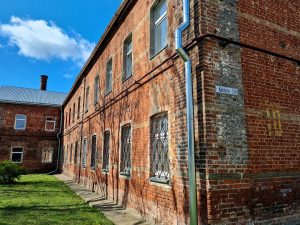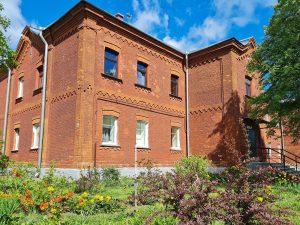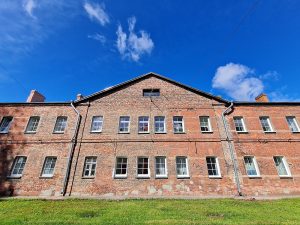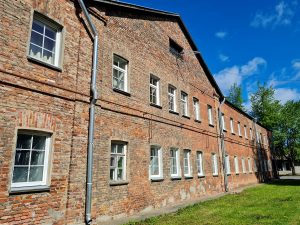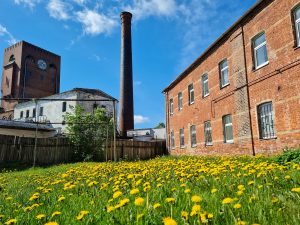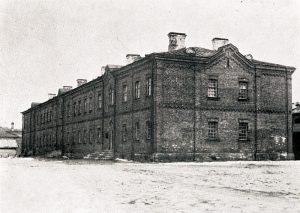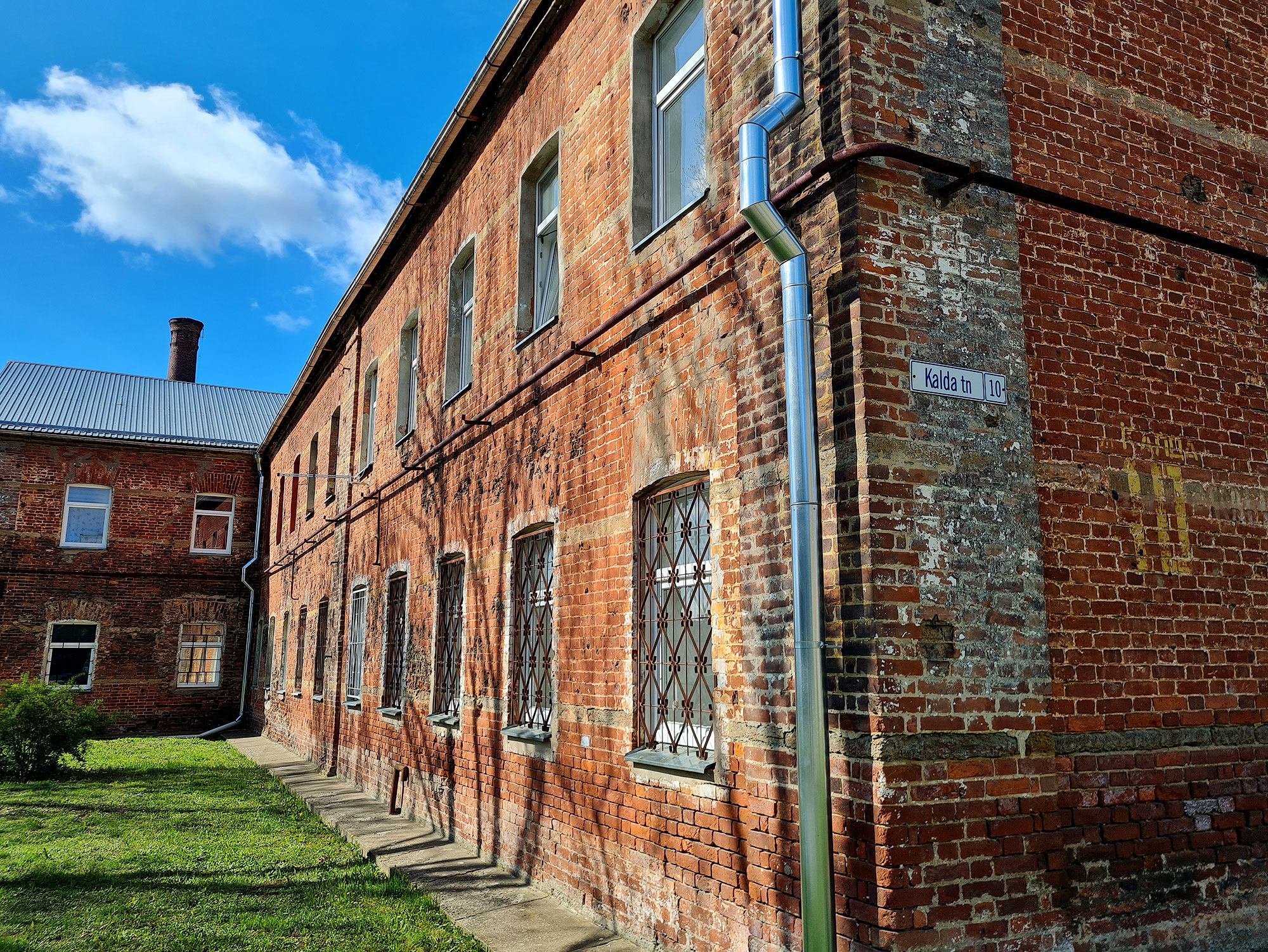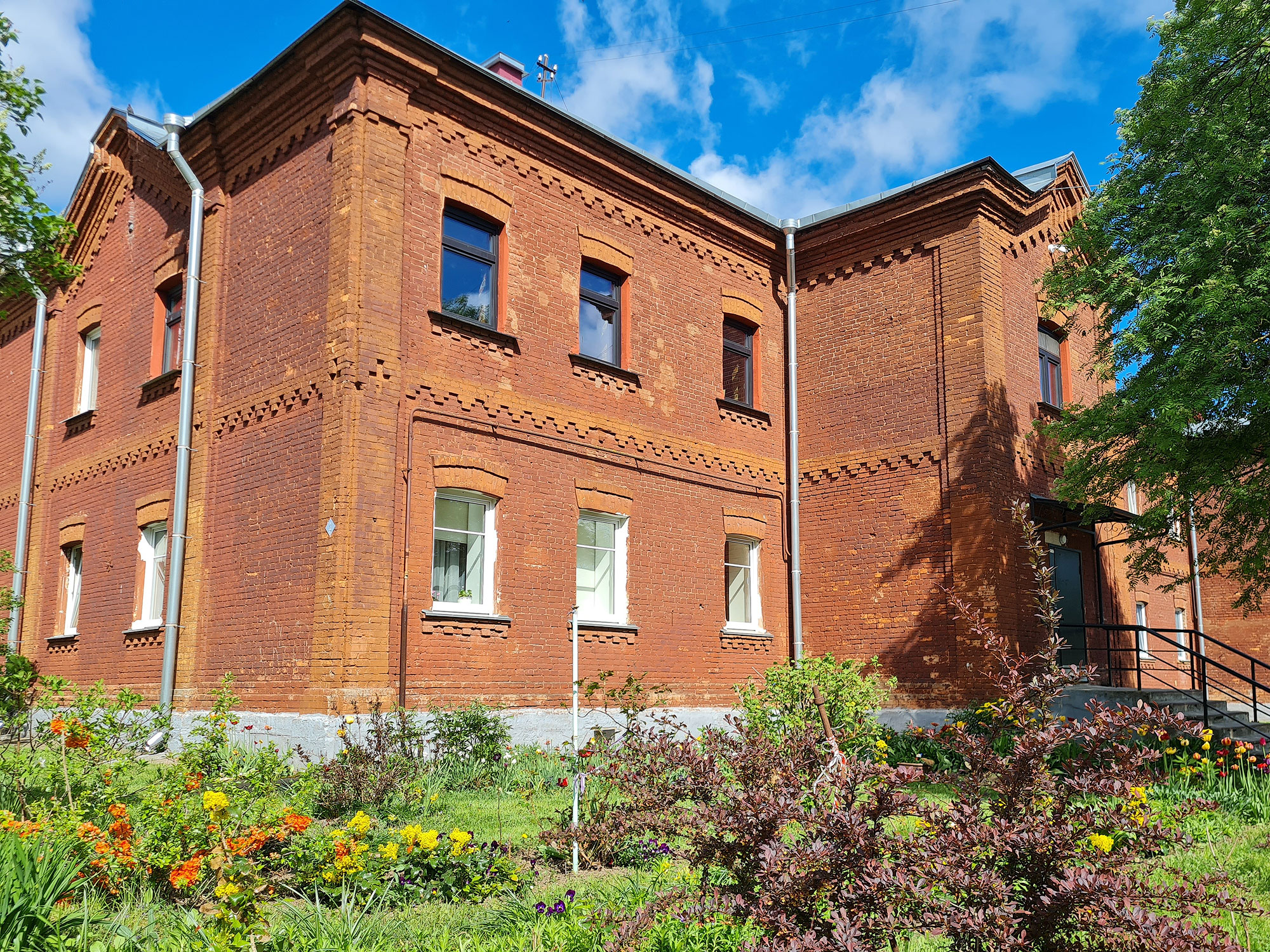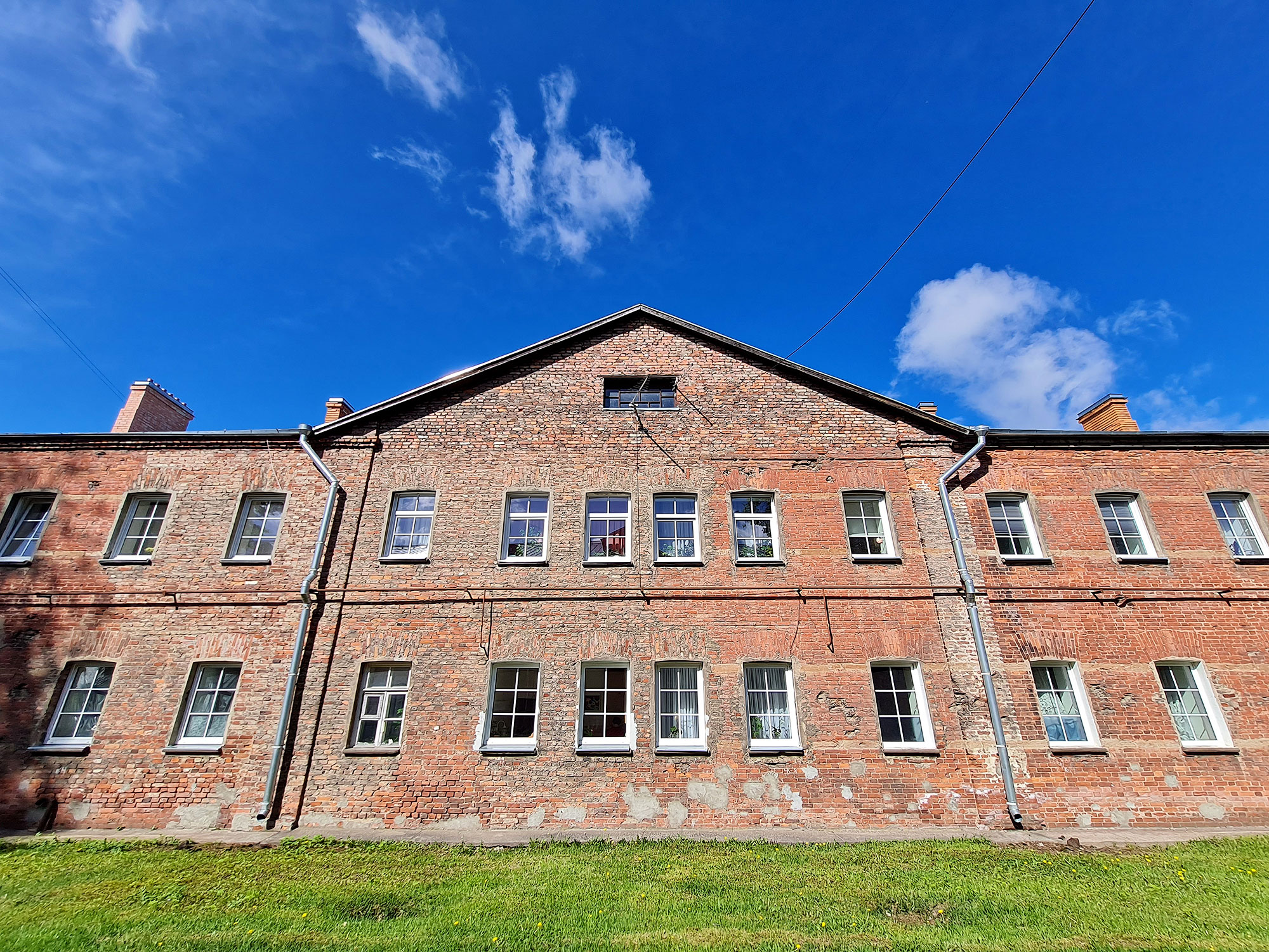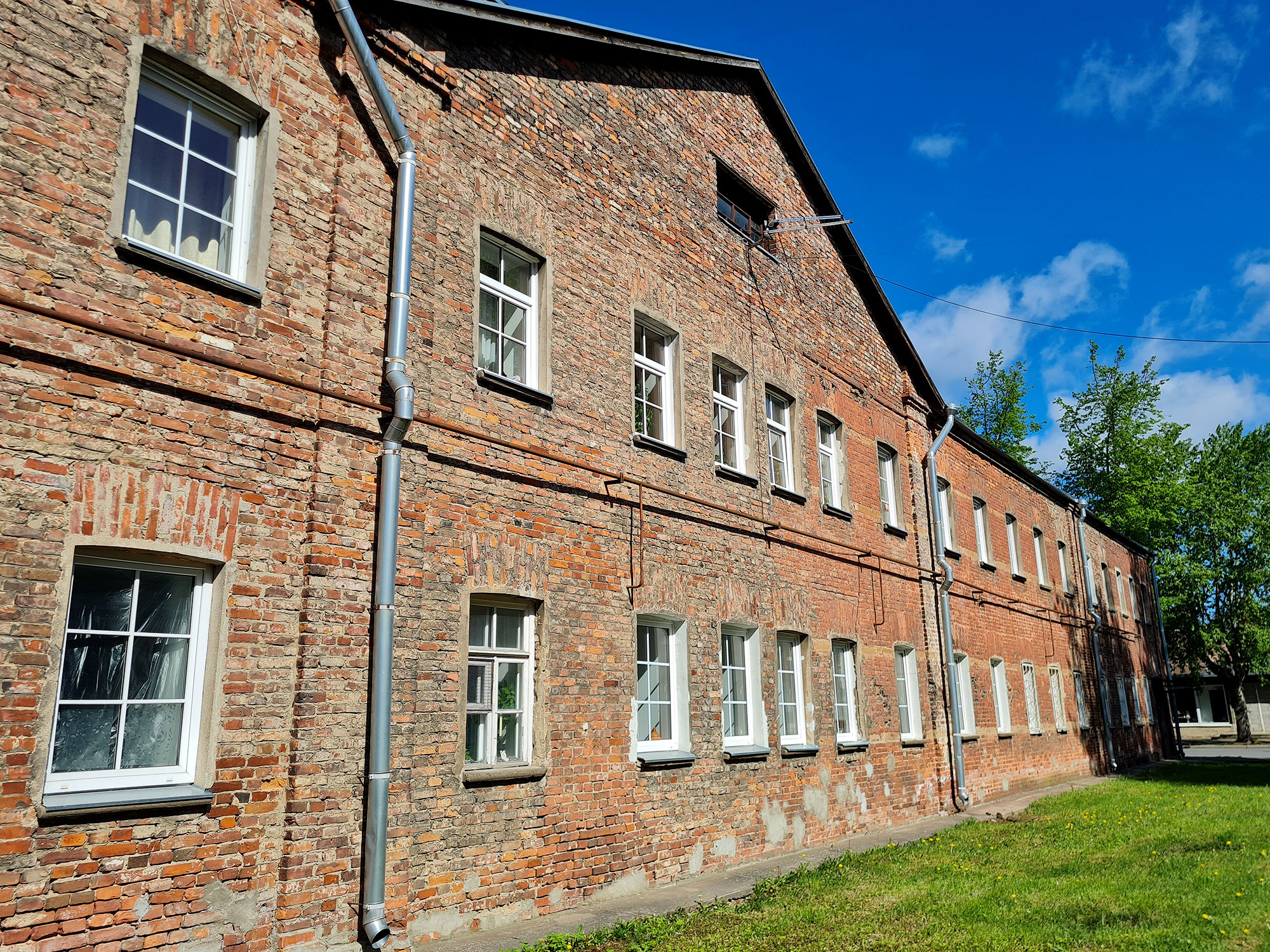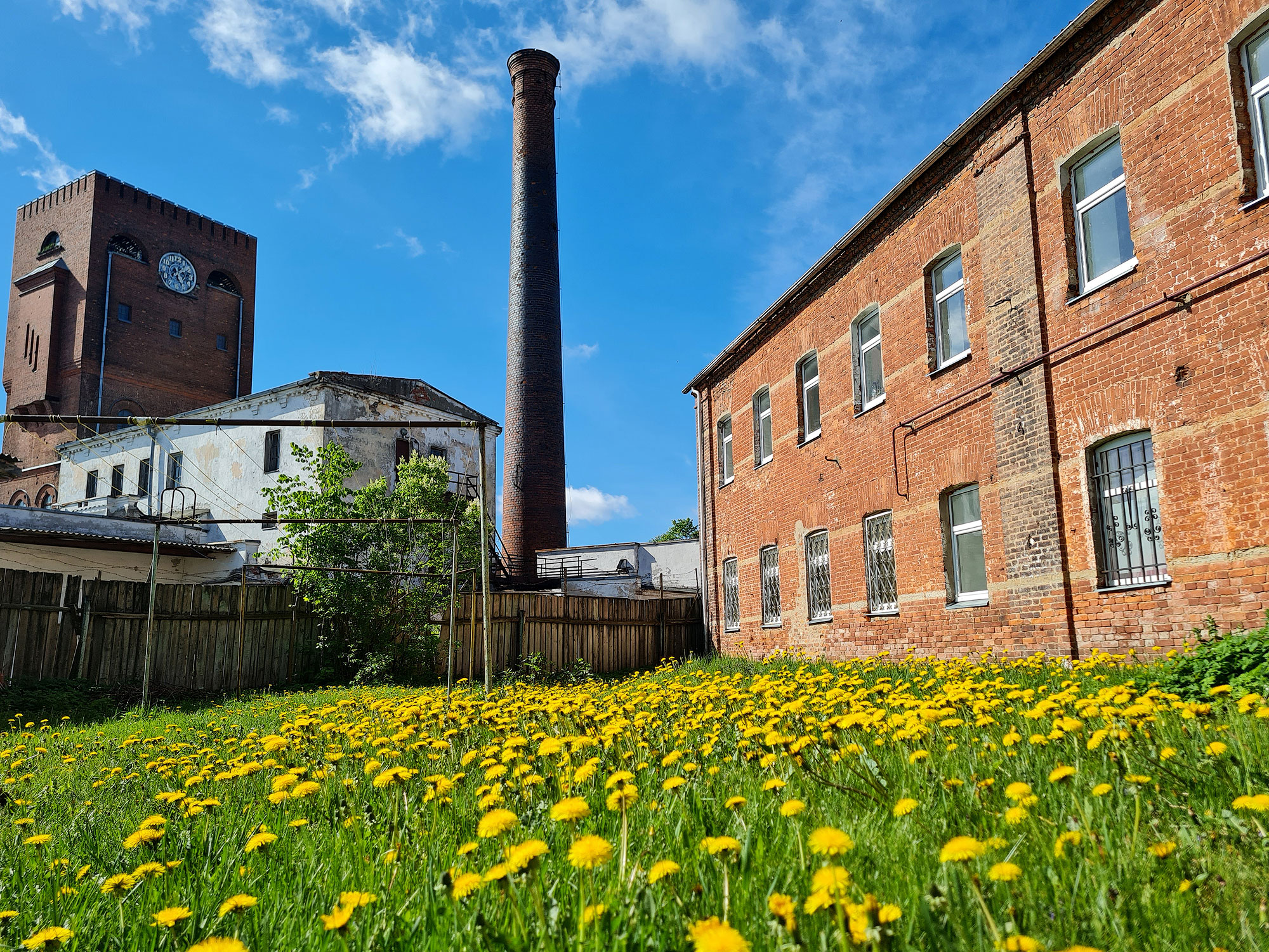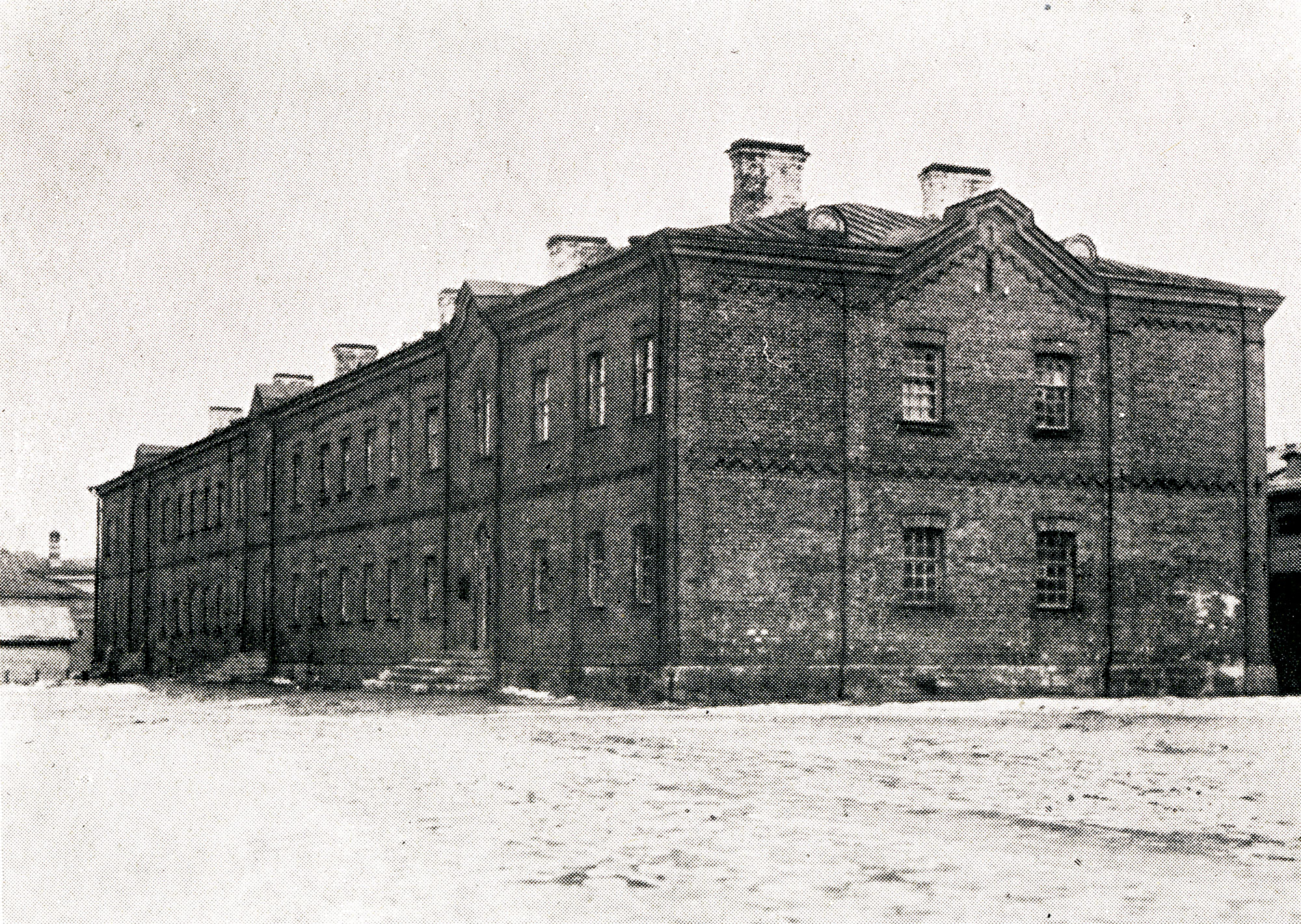Kreenholm Factory was established in the sparsely populated countryside, in the area of Joala manor and Joala village. Therefore, solving the accommodation problem for the employees of the rapidly growing company was the most urgent task. Thousands of workers, two-thirds of whom were Estonian and one-third Russian peasants who arrived in the city, needed a place to live.
The first dwellings for factory workers were built of wood. It was the only possible material, because until 1863 construction of any durable buildings outside the city fortifications was not allowed. None of the wooden dwellings have survived. In the late 1860s, the first stone barracks were built from readily available local limestone. One of them, built in the early 1870s, has survived until now (Kalda 8). Three earlier brick barracks (Kalda 4, 6 and 10) have also survived through the years on Kalda Street. Their construction dates range from the end of the 1860s to the beginning of the 1880s.
In 1875, 90 percent of the factory workers lived in Kreenholm, but over time the proportion of factory workers living in Kreenholm decreased, and before the Second World War only every second or third worker lived in Kreenholm. They longed for their own cottages and for this purpose they would get an installment mortgage to buy a plot of land. This is how the districts of Narva Paemurru, Uusküla, Kulgu, Joaoru, Kadastiku began to appear. The former suburb of Peetri also expanded. Those who could not afford to build their own houses could rent an apartment in these suburbs.
Eduard Vilde wrote about the Kreenholm barracks as he remembers them in the last years of the 19th century: ” For some time the guests carefully examined the rooms, trying to imagine how five or six people could live here, and especially sleep. There were only two wooden beds in the narrow, two-meter-wide cell – along the right wall, facing each other. Opposite one of them there was a small dining table and a low wardrobe with one door. Two chairs and a stool on the floor – this was all the furniture. Both beds were so narrow that they could hold only one person. Villem asked himself where everyone else was sleeping, and had to admit, shaking his head, that there was no better answer than that the tiny spot on the floor between the beds, the table, and the wardrobe, was also used as a nightly sleeping place. It was not clear whether all the bedding was stored somewhere inside the beds. He looked up at the ceiling and only then noticed that the walls on both sides were incomplete – about three feet up to the ceiling there were prison cell-like bars. For ventilation, all the apartments – a whole endless row – were directly connected to each other. Villem now understood why the voices from the adjacent rooms could be heard so clearly here, and that it was not only the thin walls that were to blame.”
The barracks were noisy. Everyone who has ever written about life at Kreenholm points this out. Nothing said aloud would ever stay secret. Smells and grumbles, quarrels, and swearing were passed from room to room. This kind of incomplete walls existed until 1920-1930. Air exchange between rooms also resulted in the rapid spread of diseases, such as measles, tuberculosis, cholera and diphtheria which frequently occurred in Kreenholm.
